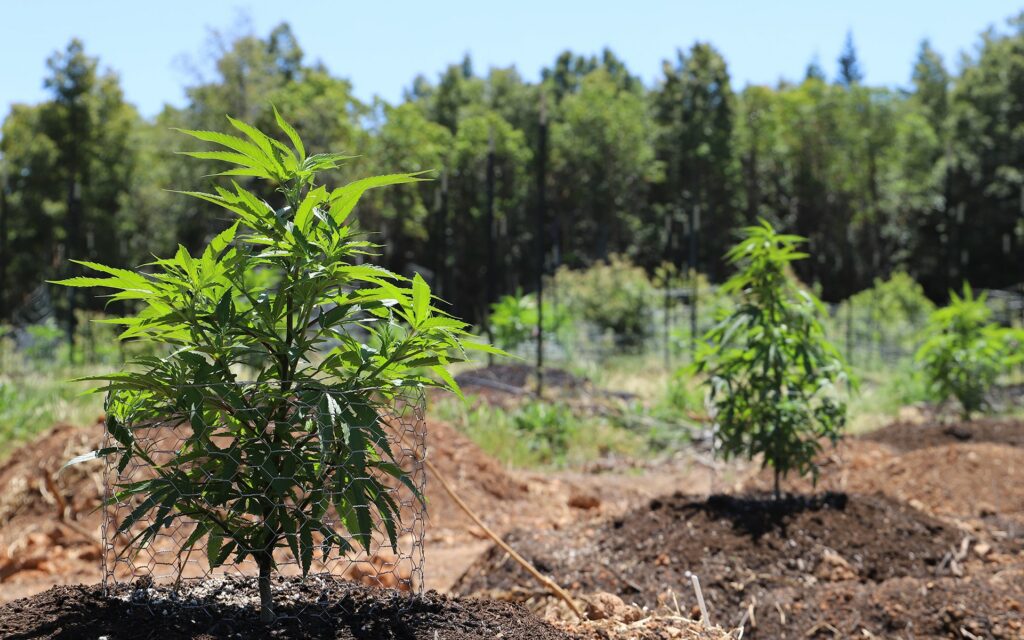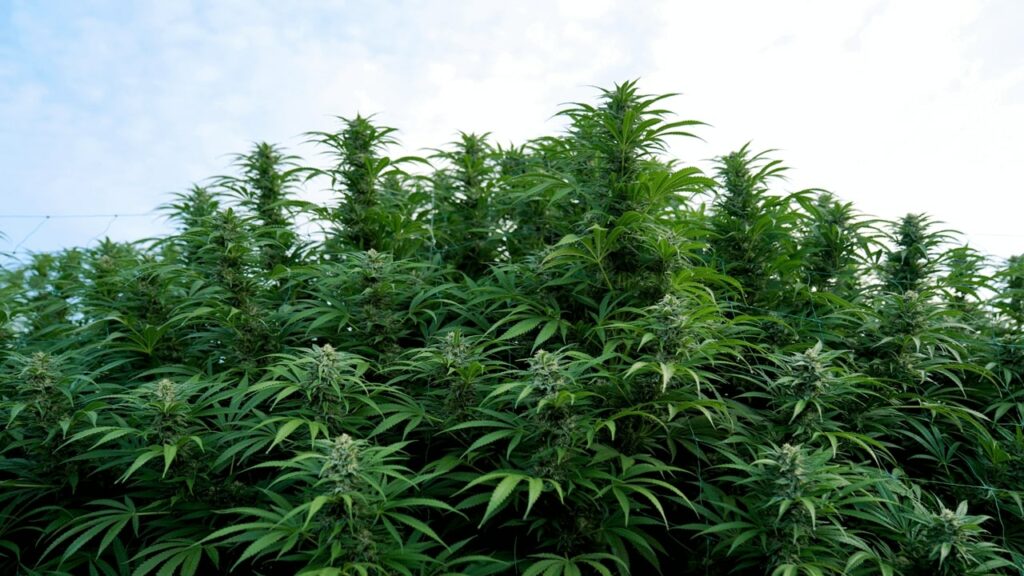Introduction
Growing cannabis outdoors not only offers economic benefits but also fosters a deep connection with nature and sustainable cultivation practices. By utilizing natural sunlight and soil nutrients, outdoor growers can produce cannabis with robust flavors and aromas unique to their environment. This method also reduces energy consumption compared to indoor cultivation, making it a more environmentally friendly option.
Moreover, outdoor-grown cannabis tends to have a richer cannabinoid profile due to exposure to varying environmental conditions throughout its growth cycle. This diversity in terpenes and cannabinoids contributes to the entourage effect, enhancing the therapeutic potential of the harvested buds.
Successful outdoor cultivation requires careful planning, from site selection and soil preparation to pest management and harvesting techniques. By following these tips and adapting them to local climate conditions, growers can cultivate high-quality cannabis plants that thrive in outdoor environments, yielding satisfying results and a deeper appreciation for the natural cultivation process.
Choosing the Right Location

Selecting an optimal location is crucial for outdoor cannabis cultivation. When choosing a spot, prioritize areas that receive ample sunlight, ideally 6-8 hours of direct sunlight per day. Adequate sunlight is essential for robust plant growth and the production of cannabinoids and terpenes, which contribute to the potency and flavor of the buds. Additionally, ensure the chosen location has good air circulation to prevent moisture buildup and reduce the risk of mold and mildew, which can thrive in stagnant air.
Security and discretion are also critical considerations. Opt for a location that is discreet and secure to protect your plants from theft or unwanted attention. Consider natural barriers or fencing to deter animals and unauthorized individuals from accessing your garden. Privacy can also minimize potential conflicts with neighbors or legal issues depending on local regulations.
Moreover, assess the proximity to water sources for convenient irrigation and accessibility for regular maintenance tasks. A well-planned location not only supports healthy plant growth but also enhances the overall success and enjoyment of your outdoor cannabis cultivation experience. By carefully selecting the right location, you can create an optimal environment that promotes thriving cannabis plants and maximizes your harvest yield.
Preparing the Soil
Preparing the soil is crucial for successful outdoor cannabis cultivation. Start by testing the pH levels and nutrient content of the soil. Cannabis plants thrive in well-draining soil with a pH level between 6.0 and 7.0, which allows for optimal nutrient uptake. Testing the soil helps determine if any adjustments are needed to create an ideal growing environment.
Amending the soil with organic matter such as compost or aged manure is beneficial for improving soil texture and nutrient availability. Organic amendments enrich the soil with essential nutrients and beneficial microorganisms, fostering healthy root development and overall plant growth. They also help retain moisture without causing waterlogging, ensuring that plants receive adequate hydration while preventing the risk of root rot.
Avoid using compacted or waterlogged soil, as these conditions can restrict root growth and inhibit nutrient absorption. Compacted soil limits oxygen availability to the roots, leading to poor plant health and reduced yields. Proper soil preparation sets the foundation for healthy cannabis plants capable of thriving throughout the growing season.
By carefully preparing the soil and maintaining optimal pH and nutrient levels, outdoor growers can create a supportive environment that promotes vigorous growth and enhances the quality of harvested cannabis buds. Investing time in soil preparation ensures that plants have access to essential nutrients and aeration, setting the stage for a successful outdoor cultivation experience.
Also Read: Essential Nutrients for Growing Healthy Cannabis Plants
Choosing the Right Strain
When selecting cannabis strains for outdoor cultivation, it’s essential to consider their suitability for the local climate and environmental conditions. Choose strains that thrive in your region’s specific climate, taking into account factors such as temperature fluctuations, humidity levels, and sunlight exposure. Indica-dominant strains are often preferred for outdoor gardens due to their resilience and compact growth habits. These strains typically have shorter flowering times and robust structures that can withstand unpredictable weather conditions and pest pressures.
Additionally, prioritize strains known for their pest and disease resistance, as outdoor environments can expose plants to various challenges. Resistant strains require less intervention and are more likely to thrive without the need for extensive pest management measures. By selecting strains adapted to outdoor growing conditions, growers can maximize yield potential and cultivate healthy, resilient plants that produce high-quality buds.
Researching strain characteristics and consulting local growers or breeders can provide valuable insights into which varieties perform best in your specific outdoor environment. Choosing the right cannabis strains sets the stage for a successful outdoor cultivation experience, ensuring plants can flourish and produce optimal harvests throughout the growing season.
Planting and Watering
When planting cannabis outdoors, timing is crucial. Wait until after the last frost date in your area to ensure plants won’t be damaged by cold temperatures. Proper spacing is also essential to allow each plant ample room for growth, ensuring they receive sufficient airflow and sunlight. Adequate spacing reduces the risk of mold and mildew by promoting better ventilation around the plants.
Watering practices are equally important for successful outdoor cultivation. Water deeply and infrequently to encourage plants to develop deep root systems. Deep roots help cannabis plants withstand drought conditions and absorb nutrients more efficiently from the soil. Monitor soil moisture regularly and adjust watering frequency based on weather patterns and plant needs. During hot, dry periods, plants may require more frequent watering to maintain optimal hydration levels.
By planting at the right time, spacing plants appropriately, and implementing proper watering techniques, outdoor growers can promote healthy root development and robust growth throughout the growing season. These practices contribute to stronger, more resilient cannabis plants capable of producing higher yields of quality buds. Regular monitoring and adjustment of cultivation practices ensure plants receive optimal care, leading to a successful outdoor cannabis cultivation experience.
Pruning and Training
Regular pruning is essential for maintaining healthy cannabis plants and maximizing yield potential outdoors. Pruning promotes airflow through the plant canopy, reducing humidity and minimizing the risk of mold and mildew. Removing dead or yellowing leaves also redirects the plant’s energy towards bud production, enhancing overall plant health and vigor.
In addition to pruning, consider implementing training techniques to optimize plant growth and light exposure. Topping involves cutting off the top growth tip to encourage lateral branching and create a bushier plant structure. Low-stress training (LST) uses gentle bending and tying of branches to open up the plant canopy, allowing more light to reach lower bud sites.
These techniques not only increase the potential for higher yields but also improve bud quality by ensuring more even light distribution and airflow. By regularly pruning and employing training methods, outdoor growers can cultivate robust cannabis plants that thrive in their natural environment, ultimately leading to a successful harvest of potent and flavorful buds.
Harvesting and Curing
Harvesting cannabis at the right time is critical to achieving the desired potency and flavor of the buds. When the flowers reach maturity and the resin glands (trichomes) appear cloudy or amber-colored, it indicates peak cannabinoid production. Use sharp, clean scissors to carefully trim branches, preserving the integrity of the buds and minimizing damage.
After trimming, hang the branches upside down in a cool, dark, and well-ventilated area to dry slowly. Proper drying prevents mold and preserves terpene profiles essential for flavor and aroma. Once the buds feel dry to the touch and stems snap rather than bend, they are ready for curing.
Curing involves placing dried buds in glass jars, filling them about three-quarters full to leave space for air circulation. Seal the jars and store them in a cool, dark place, burping the jars daily for the first week to release excess moisture and promote even curing. Over several weeks to months, curing enhances the flavor, smoothness, and potency of the buds, resulting in a superior cannabis experience.
Conclusion
Growing cannabis outdoors offers enthusiasts a natural and sustainable way to cultivate high-quality buds. By selecting the right location, preparing the soil, choosing suitable strains, and implementing proper care techniques, outdoor growers can achieve successful harvests while enjoying the therapeutic benefits of homegrown cannabis. Whether you’re a novice or experienced grower, outdoor cultivation allows you to connect with nature and experience the full lifecycle of this versatile plant.

